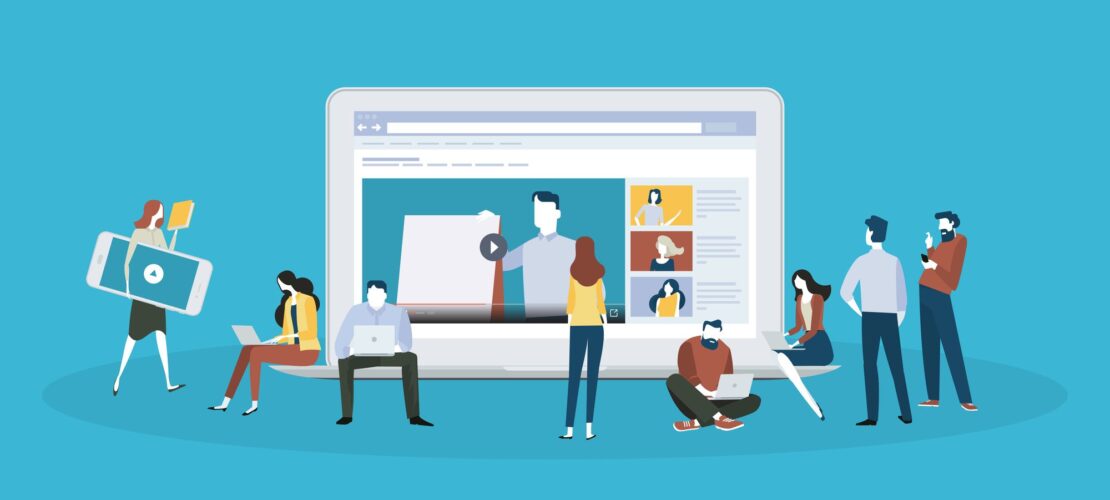
Microlearning is the secret ingredient that’s missing in your employee training strategy.
Here’s why: individuals forget around 70% of new information within the first 24 hours, according to research.
When overloaded with large amounts of new information, the human brain simply cannot retain all of it. That is, unless it is repeatedly reinforced over time.
This fact is quite problematic when you consider the way corporate training has historically worked. Typically, employee training involves presenting staff with large chunks of information, with the expectation that they will remember most – if not all – of it.
Not only are employees expected to remember the majority of training information, they are also expected to understand that training well enough to incorporate it into their daily workflows.
But if employees forget much of the new information they’re presented with, how can training lead to long-term behavior changes?
This is where microlearning comes in.
Microlearning is the exact opposite of the traditional, long-form corporate training model. As the name suggests, it involves sharing bite-sized chunks of training information with employees.
Because the information is kept short and sweet, it can be easily distributed and – most importantly – easily remembered. This allows training to have maximum impact and ROI.
But before you rush to earmark your entire L&D budget for microlearning, it’s important to understand how it works and how to properly implement it.
So, we’ve compiled all the fundamental information about microlearning in this article. Here’s what we’re covering today:
- What is microlearning?
- Benefits of microlearning
- How to use microlearning in workplace training
To learn the basics about microlearning and how to incorporate it into your training strategy, keep scrolling!
WHAT IS MICROLEARNING?

POP QUIZ!
70% of new information is forgotten after 24 hours. What percent of new information is forgotten after 1 week?
- 70%
- 85%
- 90%
- 100%
The correct answer is (3) 90%. Shocking, right? But there are scientific reasons why our brain forgets so much stuff. You can read more about that here.
How’d you do on our pop quiz? Interestingly, it doesn’t matter whether you passed or failed! Whether or not you knew the correct answer before the quiz, you certainly found out the right answer at the end of the quiz.
This brief exercise helps to lock that information into your brain. And it’s a perfect example of how microlearning works.
Microlearning involves sharing small bits of specialized information that can be easily understood and retained. The method seeks to teach or reinforce small pieces of segmented knowledge, rather than an enormous cluster of concepts.
Because the information is shared in small doses, it’s more likely to be remembered and understood.
Microlearning can be delivered in a variety of formats, not just pop quizzes. Here are some examples of how you can distribute your training via microlearning:
- Infographics
- Videos
- Quotes
- Learning Management System modules
- Quizzes
- Gamification
- Mobile learning
- Social media posts
- Interactive exercises
- Short group discussions
BENEFITS OF MICROLEARNING

Microlearning is one of the most flexible employee training tools out there.
Aside from the fact that it can boost information retention, there are a variety of benefits to sharing information in highly focused segments.
Here are some of the pros of microlearning in employee training:
Low implementation cost
No need to invest in new software or hardware. Microlearning has virtually no start-up costs.
Blend with other training tools and formats
Do you use a Learning Management System (LMS) to deliver your training? Traditional, instructor-led training? Pre-recorded videos? Mobile learning? Microlearning can be delivered through a variety of formats and tools.
Quickly reinforce important concepts
Microlearning is the perfect vehicle for concepts that need to be quickly revisited. For example, if your business is implementing a policy update, consider sharing a series of micro units that teach out that policy update.
Boosts learning retention
Although it’s been mentioned in other sections of this article, it’s worth mentioning again that microlearning increases information retention. This is perhaps the most significant advantage of this approach over other training strategies.
Easily lends itself to mobile training
You’ve heard of digital training. But did you know you can access training on a mobile device? Microlearning is the perfect companion to mobile training because we are all accustomed to consuming short bites of content on our mobile devices. Need a break from daily tasks? Instead of opening Instagram, pull up a 5-min lesson on your phone!
Make training accessible to those without computers
Not everybody has access to computers in their average workday – think warehouse, manufacturing, other non-office jobs. Additionally, many people do not have computers at home that they can use for digital training. But these days, most people have a smartphone or live with someone who does. When paired with mobile learning, microlearning can help overcome device accessibility issues.
Access at time of need
Because microlearning does not require a three-hour sit-down lesson, employees can access the information they need when they need it.
Cover a variety of topics
Microlearning is a highly adaptable strategy. Whether you want to send a reminder about document management policies, or you want to teach tips on soft skills, it is a viable tool.
HOW TO USE MICROLEARNING IN WORKPLACE TRAINING

Now you understand what microlearning is and what its benefits are. But how can you use this tool for workplace training? Here are some pro-tips from our learning & development experts at RTG Solutions Group.
Fold microlearning into your existing training infrastructure
Microlearning is great, but it’s not a standalone tool. If you try to deliver all of your training in a micro format, it’ll take you three weeks just to go over the company dress code.
Microlearning works best when you utilize it as part of a larger learning & development strategy at your company.
So, if you are interested in trying this approach, don’t scrap your entire training process and replace it with bite-sized units. Instead, take stock of the current tools, techniques, and modules in your training repertoire.
Then, think about which areas of your employee training could use a boost. Which modules haven’t been updated in a while? What aspects of training have your employees forgotten? These might be the best places to test microlearning.
Implement in an online or mobile training environment
While microlearning can be used in in-person training, it is most beneficial in remote employee training programs.
You’ll get the most mileage out of microlearning when you use it in a digital framework because you can easily distribute the information to your employees.
In particular, digital training offers a less disruptive way of delivering training to your employees.
Suppose you want to offer 5 microlearning opportunities per week, or one per day. Calling five team meetings per week is more disruptive – and logistically difficult – than sending out five emails or LMS updates.
To sum it up, training via microlearning should be frequent to consistently reinforce concepts. And for small, frequent bursts of learning, online and mobile devices work best.
Create a digital repository of microlearning materials
Yet another reason to go digital with your training is to create a digital library of materials.
All training materials should be organized in one, easy-access place. Microlearning is no exception.
Centralizing your “lessons” on a singular database allows employees to access the information when they need it most.
Accessible learning materials are a must-have if you want to create a culture of continuous learning at your organization.
A continuous learning culture is a type of company culture where learning and development are a core priority. In cultures of continuous learning, employees have a variety of avenues and resources for on-going development.
Why does that matter?
A culture of continuous learning has many benefits. It helps your business retain top talent and solve problems faster, just to name a couple.
Incidentally, microlearning is also a great strategy to foster a learning culture because it allows you to fold training into the everyday working experience.
For more reading on continuous learning culture, check out these articles:
- What’s all the buzz about a continuous learning culture?
- Build a learning culture: a 4-step approach
Monitor outcomes
Measuring results is crucial for any training program. Otherwise, there is no way to know for sure if your training is effective.
To measure outcomes for microlearning, decide which Key Performance Indicators (KPIs) you’ll use to measure performance changes.
It is important to decide on these KPIs before you start testing out microlearning, so that you can begin gathering data on the results from day 1.
Once you roll out the microlearning lessons, periodically check up on those KPIs.
Are they moving in a direction that indicates success? Great! Think about how you can expand your strategy to cover new topics and training territories.
Are KPIs unchanged or moving in the wrong direction? No need to panic – this just means something isn’t working. Time to adjust your approach!
Whether your initial attempts show soaring success or less-than-fabulous results, the important thing is to monitor those KPIs to inform future action on.
CONCLUSION
Microlearning made its way into the organizational training world, and it’s here to stay. It’s a quick-win strategy to fight forgetfulness and boost information retention.
Beyond that, it’s a powerful tool to provide frequent training across a variety of subject areas.
We’ve shared with you our top tips to get the most out of this revolutionary training technique.
First, incorporate it into your existing training repertoire, rather than starting from scratch.
Second, consider implementing it in an online or mobile training platform.
Third, create a digital library to store microlearning lessons.
And finally, monitor your results.
With these basic guidelines, you can implement a fool-proof microlearning component that takes your employee training game to new heights.
Interested in microlearning and other innovative learning tools for your business? Contact us today to speak with our learning and development experts!
